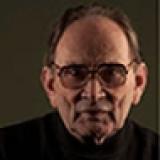
Jaan Einasto
<p>Jaan Einasto was born in 1929 in Tartu, Estonia. (His surname is an anagram of Estonia, a legacy from his father, who patented it.) He attended the University of Tartu as an undergraduate and he has retained his affiliation with the institution to this day. He received a Ph.D. equivalent from the University in 1955 and a senior research doctorate in 1972.</p><p>Upon receiving his Bachelor of Science in 1952, Einasto joined Tartu Observatory as a research associate. He has served as the head of the astrophysics group (1963-1968), the Department of Physics of galaxies (1976-1992), and the Department of Cosmology (1992-1997). Since 1998 he has been a senior researcher.</p><p>Einasto was one of the pioneers of a branch of astronomy now called Near Field Cosmology. By looking at the nearby universe for clues, he and the fellow practitioners of the field have made significant contributions to our understanding of the formation and evolution of galaxies and of the universe itself, with its weblike pattern of filaments of clusters and superclusters separated by vast voids of empty space. Their growth on all scales is highly dependent on the gravitational influence of dark matter.</p><p>In the 1970s, Einasto overcame some of the scientific disadvantages of living in a small Soviet satellite nation during the Cold War by organizing conferences that would attract Western astronomers. In 1975, in Tallinn, he oversaw a meeting on dark matter. Two years later he organized an International Astronomical Union symposium, also in Tallinn, called “The Large Scale Structure of the Universe,” a landmark event where Einasto and his colleagues presented the first evidence for the existence of the cosmic web.</p><p>Einasto has received the Estonian Science Prize four times, the Marcel Grossmann Award, and the Viktor Ambartsumian International Prize, among other honors. From 1983 to 1995 he served as the head of the Department of Astronomy and Physics at the Estonian Academy of Science.</p>

